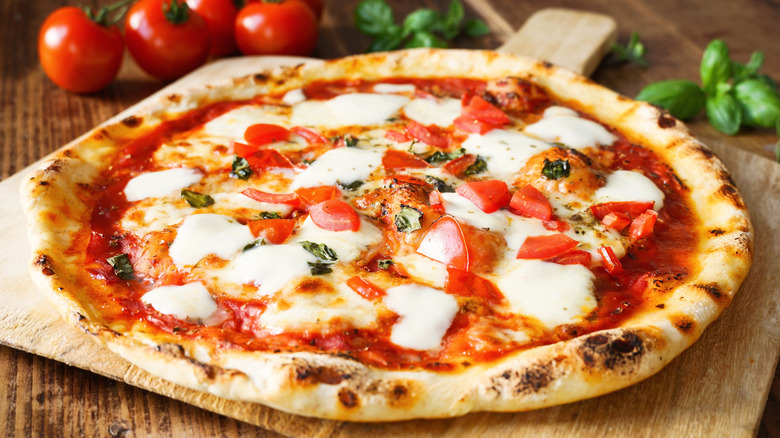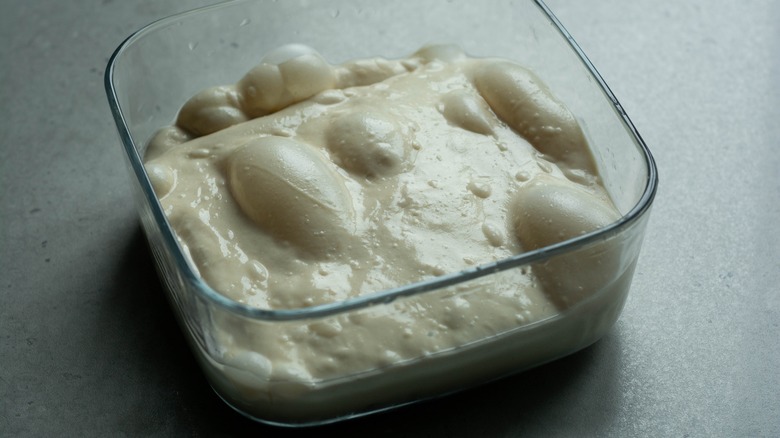The Science Behind Pizza Crust Bubbles
Pizza is the ultimate party food. Whether you're celebrating an anniversary, birthday, graduation, or even an engagement, pizza is kind of the way to go. That is because it is wildly versatile for vegetarians, meat lovers, cheese-heads, and now, even gluten-free folks. There is quite literally a pizza for everyone, including those who are obsessed with fish (looking at you, anchovy pizza). And while toppings may be substituted, sauces switched, and cheese added or removed, one thing needs to remain in excellent taste: The pizza crust.
The crust is the cornerstone of the pizza-making process. Without it, you couldn't qualify your dish as a pizza. The gluten and protein content will affect the crust. Gozney examines the effect of low and high protein content in creating a firmer and crispier crust (with crispier bubbles, too) or softer and chewier dough. Pizza flours have a wide range of protein options ranging from 9-15%. Depending on how thick or thin the crust might be, it can change your whole dining experience. Pop Up Pizza claims that the thicker and fluffier the crust, the more bready it will taste. And the thinner the crust, the more likely you are to enjoy the toppings. But regardless of what kind of crust you personally prefer, one thing remains consistent: Pizza bubbles.
Keeping things small
But wait ... What exactly are pizza bubbles? Well, at the end of the day, pizza crust is still bread; a leavened bread, which means that it requires a little help from yeast to form those excellent, elastic gluten strands. The yeast will begin to eat the sugar in the pizza dough and belch out carbon dioxide, which then becomes trapped, pushing against the skin of the dough to create bubbles (via WUSF Public Media). When the bread bakes, these bubbles can expand and solidify into the bake itself.
According to Alive & Kickin' Pizza Crust, smaller bubbles are preferable to large bubbles because they are less likely to push off toppings and are less likely to burn. One of the ways to prevent large bubbles is by letting your dough warm to room temperature. First We Feast states that bubbles lining the pizza crust and burning black are called "leopard spotting" and occur when the pizza meets the intense heat of the oven. There is nothing inherently bad or good about bubbles, but people do tend to consider the smaller, the better.

